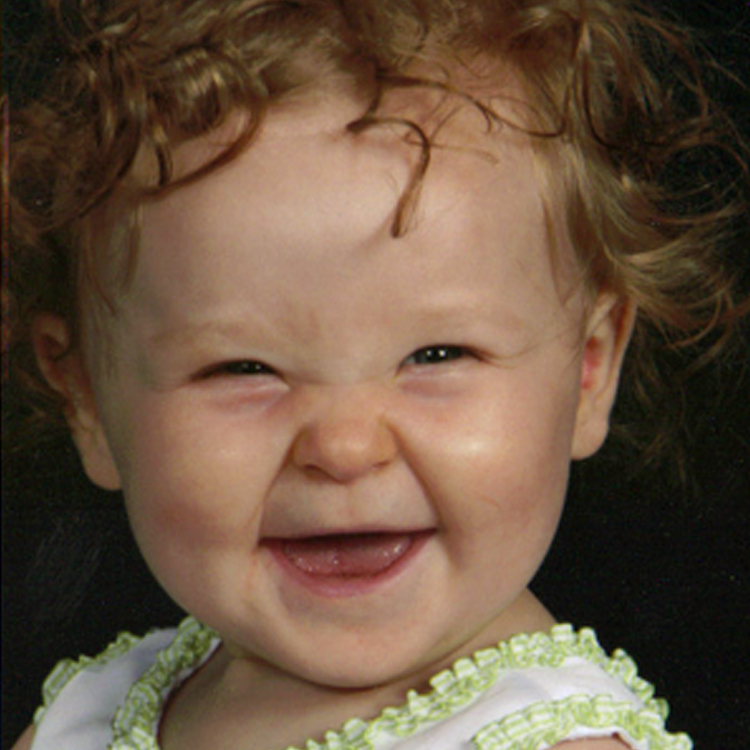Family Voices — Abigail’s Story
Abigail’s hand was caught in the gap when her crib side rail came loose. She was thirteen months old.

Submitted by her father
On September 20, 2007, my wife and I awoke to hear a banging noise and our 13-month-old baby, Abigail, screaming. My wife looked into the video monitor and believed the crib looked broken. I ran in the room and to my disbelief the crib rails had separated at one top corner, pinching her hand. If we had not noticed this in our monitor, Abigail might have been trapped. It could have been a disaster. I could see that the bolt was drilled in too close to the edge and broke out.
When I think of what could have happened to my daughter or another child, it forces me to continue to advocate for a stronger children’s product safety system. That responsibility should not have to lie in a consumer’s hand. Whoever denies change in this system is just killing our children.
Since my Abigail’s horrific situation, I have been on a one-man crusade to do something about it. While the recall is a good first step, my heart dropped when I saw there were 85 prior complaints of loosening hardware, despite the company’s assurances that mine was an isolated incident.
What’s Happened Since Abigail’s Injury?
Cribs are responsible for more infant deaths than from any other nursery product. In the last two decades, 1,100 children have died from crib related injuries. In 2011, over 12,200 children were rushed to emergency rooms with injuries.
Abigail’s father called Bassettbaby, the crib’s manufacturer, the day she was injured. He was told someone would call him back and informed that no one could help his for a few days. When he finally spoke with a VP from Bassett four days later, he found out that this was not an isolated problem. Yet, Bassett would not report the incident to anyone, including the CPSC. A month later, Bassett’s lawyer contacted Abigail’s father to tell him that the crib would be recalled by the CPSC. However, the recall was not announced for 48 days.
In 2008, President Bush signed the Consumer Product Safety Improvement Act which required strong standards for children’s products and that all durable children’s products come with product registration cards so that the owners can learn of recalls directly from the manufacturer.
On June 28th, 2011, the world’s strongest standard was put in place for all cribs. Since this law, crib recalls and injuries have decreased a great deal. These new standards require cribs to meet tough testing standards, have improved mattress support, prohibit drop sides, and have stronger hardware and slats.
How You Can Take Action
To take action and help prevent further incidents, injuries, and deaths,
there are a number of things you can do:
- Follow the ABCs of safe sleep at every sleep time: 1) Baby is Alone and has their own separate sleep space. 2) Baby is placed to sleep on their Back, and 3) baby sleeps in a Crib, play yard or bassinet that meets the federal safety standard.
- Remove other products such as crib bumper pads, pillows, positioners, extra padding, blankets, stuffed animals, or toys from the sleep environment.
- Share KID’s safe sleep PSA.
- Report any incidents to the CPSC at SaferProducts.gov.
Check out our action steps for all children’s products here.
More Information on Cribs
Although mandatory standards exist for cribs, only recently has an effort been made to strengthen those standards and require testing and verification of new cribs. Because of these standards, all cribs must include proper assembly instructions and diagrams as well as cautionary and warning labels as required by federal law.
More information on Safe Sleep
A safe sleep environment is the one place parents and caregivers can place an infant and know they will be safe, even as the parent sleeps or attends to other things. Infants sleep safest following the ABC’s of safe sleep—Alone, on their Back and in a Crib, bassinet or play yard that meets federal standards and hasn’t been recalled. AAP also recommends babies sleep on a flat surface and unrestrained. Nothing should be in the crib except a firm mattress with a tight-fitting sheet.
View our safe sleep video to learn more about how to keep your baby safe while sleeping.
